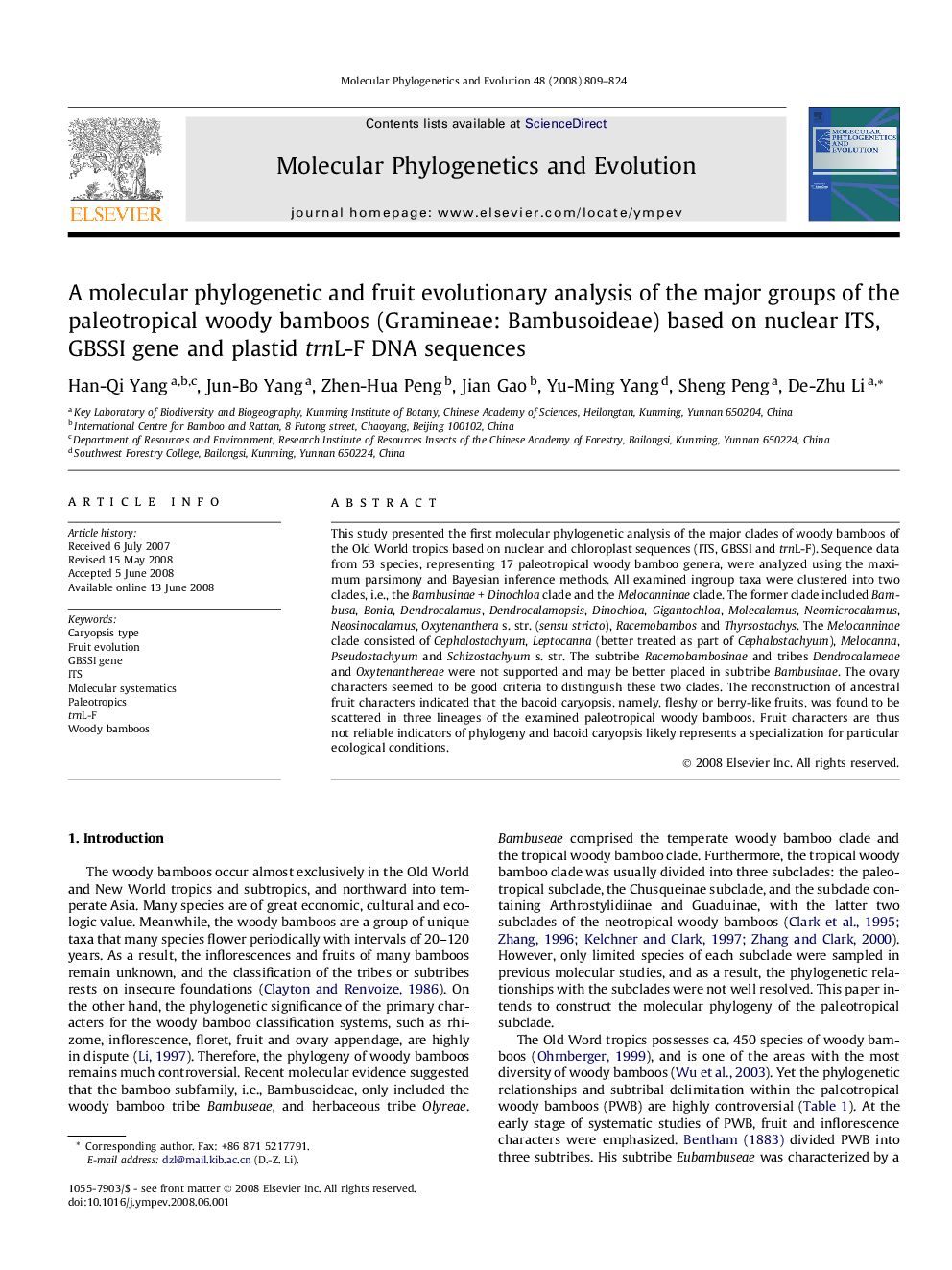| کد مقاله | کد نشریه | سال انتشار | مقاله انگلیسی | نسخه تمام متن |
|---|---|---|---|---|
| 2835144 | 1164334 | 2008 | 16 صفحه PDF | دانلود رایگان |

This study presented the first molecular phylogenetic analysis of the major clades of woody bamboos of the Old World tropics based on nuclear and chloroplast sequences (ITS, GBSSI and trnL-F). Sequence data from 53 species, representing 17 paleotropical woody bamboo genera, were analyzed using the maximum parsimony and Bayesian inference methods. All examined ingroup taxa were clustered into two clades, i.e., the Bambusinae + Dinochloa clade and the Melocanninae clade. The former clade included Bambusa, Bonia, Dendrocalamus, Dendrocalamopsis, Dinochloa, Gigantochloa, Molecalamus, Neomicrocalamus, Neosinocalamus, Oxytenanthera s. str. (sensu stricto), Racemobambos and Thyrsostachys. The Melocanninae clade consisted of Cephalostachyum, Leptocanna (better treated as part of Cephalostachyum), Melocanna, Pseudostachyum and Schizostachyum s. str. The subtribe Racemobambosinae and tribes Dendrocalameae and Oxytenanthereae were not supported and may be better placed in subtribe Bambusinae. The ovary characters seemed to be good criteria to distinguish these two clades. The reconstruction of ancestral fruit characters indicated that the bacoid caryopsis, namely, fleshy or berry-like fruits, was found to be scattered in three lineages of the examined paleotropical woody bamboos. Fruit characters are thus not reliable indicators of phylogeny and bacoid caryopsis likely represents a specialization for particular ecological conditions.
Journal: Molecular Phylogenetics and Evolution - Volume 48, Issue 3, September 2008, Pages 809–824